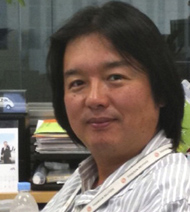DSI revised its findings based on supposed evidence that Muramoto was killed by a bullet likely fired from an AK-47 assault rifle, according to DSI chief Tharith Pengdith, who was speaking at a news conference. He told reporters that soldiers were armed with different weapons, including M-16s, during suppression operations that day, according to news reports.
The local English-language Bangkok Post reported on Sunday that Army Chief of Staff Gen. Daopong Rattanasuwon visited DSI to complain about its initial findings that blamed soldiers for Muramoto’s death. Tharit denied that he met with Daopong in the same news report. The Bangkok Post also reported that the Thai military has around 20,000 AK-47 assault rifles in its arsenal.
“The contradiction of the preliminary findings of the investigation into journalist Hiro Muramoto’s death raises questions about the independence of the government’s investigation,” said Shawn Crispin, CPJ’s senior Southeast Asia representative. “We are particularly concerned by reports that a senior military official may have pressured the DSI into censoring its initial findings.”
Thomson Reuters News Editor-in-Chief Stephen J. Adler said in a statement that “the apparent contradiction between the preliminary investigation and these reports makes full transparency about the process and the findings imperative.”
“We call on the Thai government to take the investigation forward,” Adler said.
At least 90 people were killed and more than 1,800 injured between April and May in 2010 in the worst political violence in Thailand’s modern history. Two journalists, Muramoto and Italian freelance photographer Fabio Polenghi, were killed and at least nine other Thai and foreign reporters were seriously injured while covering armed exchanges between troops and protesters.
Police forensics expert Lt. Gen. Amporn Charuchinda told reporters at Monday’s news conference that it remained “unclear” who shot Polenghi, according to The Associated Press. He said that the investigation into Polenghi’s death was still ongoing.
A CPJ investigation last year, “In Thailand unrest, journalists under fire,” uncovered instances of official obstruction into privately-led inquiries into both Muramoto’s and Polenghi’s death. CPJ sources said the military refused to make available for interviews soldiers who were believed to be near Muramoto at the time of his shooting.
DSI did not reveal today whether it based any of its findings on closed-circuit footage in government’s possession of the area where Muramoto was shot. Tharit said the DSI report will be forwarded to the Metropolitan Police Bureau “which might have additional evidence that could make the case clearer,” according to The Associated Press.
